EQUITABLE GROWTH, FINANCE, AND INSTITUTIONS POLICY NOTE
Is a Global Recession Imminent?
Justin Damien Guénette, M. Ayhan Kose, and Naotaka Sugawara
EFI Policy Note 4
SEPTEMBER 2022
�
Is a Global Recession Imminent?
Justin Damien Guénette, M. Ayhan Kose, and Naotaka Sugawara∗∗∗∗
6995
Equitable Growth, Finance, and Institutions Policy Notes (EFI Policy Notes) are prepared under the direction of the Vice President
for Equitable Growth, Finance, and Institutions (EFI). EFI Policy notes analyze topical issues of importance to policy makers in
emerging market and developing economies. The findings, interpretations, and conclusions expressed in this paper are entirely
those of the authors. They do not necessarily represent the views of the International Bank for Reconstruction and
Development/World Bank and its affiliated organizations, or those of the Executive Directors of the World Bank or the governments
they represent.
∗ Guénette: World Bank, Email: jguenette@worldbank.org; Kose: World Bank, Brookings Institution, CEPR, CAMA,
Email: akose@worldbank.org; Sugawara: World Bank, Email: nsugawara@worldbank.org. We thank Amat Adarov,
Carlos Arteta, Kevin Clinton, Antonio Fatas, Indermit Gill, Jongrim Ha, Graham Hacche, Patrick Kirby, Franziska
Ohnsorge, Joseph Rebello, James Rowe, Franz Ulrich Ruch, and Christopher Towe for their detailed comments and
suggestions. Lorez Qehaja and Kaltrina Temaj provided excellent research assistance.
�
CONTENTS
EXECUTIVE SUMMARY
I. INTRODUCTION
II. GLOBAL RECESSIONS SINCE 1970
II.1. MAIN CHARACTERISTICS
II.2. EVENTS DURING GLOBAL RECESSIONS AND DOWNTURNS
III. GLOBAL ACTIVITY
III.1. EVOLUTION OF GROWTH FORECASTS
III.2. RECENT DEVELOPMENTS IN HISTORICAL CONTEXT
IV. POLICY RESPONSES
IV.1. EVOLUTION OF POLICIES
IV.2. RECENT POLICY ACTIONS IN HISTORICAL CONTEXT
V. GLOBAL GROWTH SCENARIOS
V.1. BASELINE SCENARIO
V.2. SHARP DOWNTURN SCENARIO
V.3. GLOBAL RECESSION SCENARIO
VI. CONCLUSION
APPENDIX I. IDENTIFYING THE TURNING POINTS OF THE GLOBAL BUSINESS CYCLE
APPENDIX II. GLOBAL ECONOMIC MODEL
REFERENCES
FIGURES
Figure 0. Global recession: activity, policies, and outcomes
Figure 1. Global context
Figure 2. Global recessions
Figure 3. Growth forecasts
Figure 4. Recent developments and global recessions
Figure 5. Interest rates, government expenditures, and debt
Figure 6. Inflation, interest rates, and fiscal balances
Figure 7. Policies during global recessions
Figure 8. Global scenarios: GDP and trade growth
Figure 9. Global scenarios: inflation, interest rates, and oil prices
Figure 10. Scenarios in relation to past global recessions
Figure 11. Vulnerabilities, crises, and growth
TABLES
Table 1. Global scenarios: global inflation, nominal and real interest rates
Table 2A. Global scenarios: GDP growth
Table 2B. Global scenarios: Per capita GDP growth
Table I.1. GDP growth during global recessions
Table I.2. Global recessions: duration and amplitude (with quarterly series)
Table I.3. GDP growth during global downturns
Table I.4. List of lowest and highest growth rates
1
3
7
7
8
10
10
12
14
14
17
21
22
24
27
31
35
38
41
2
4
8
11
13
16
17
20
23
26
28
33
25
29
30
35
36
36
37
�
The odds of recession in Europe, the United States, and China
are significant and increasing, and a collapse in one region will
raise the odds of collapse in the others… The risks of a global
recession trifecta are rising by the day.
Kenneth Rogoff, April 26, 2022
A global recession is entirely avoidable… Even by laxer
criteria like GDP growth below 2.5 percent, global
recession is very far from inevitable.
Jeffrey Frankel, August 25, 2022
Whether the balance of risks is toward inflation, recession,
or a smooth landing from current turbulence depends on
unknowns such as the duration of the Ukraine war…
…. But a global recession is certainly not inevitable.
Anne O. Krueger, August 25, 2022
… If these two economies (the US and China) are both in their
respective versions of recession, then that will virtually guarantee a
global downturn. Given their current weaknesses and challenges,
such a scenario is quite possible… But I am less convinced
of this than I probably was a few months ago…
Jim O’Neill, August 25, 2022
Notwithstanding the pitfalls of forecasting anything these days,
my cracked and worn crystal ball sees a global recession occurring
in the next year…. Collectively, Europe, the US, and China make up
about half of world GDP on a purchasing-power-parity basis. With
no other economy able to fill the void, I am afraid a global
recession does indeed appear inevitable.
Stephen S. Roach, August 25, 2022
�
EXECUTIVE SUMMARY
Context. Since the beginning of the year, a rapid deterioration of growth prospects, coupled with rising
inflation and tightening financing conditions, has ignited a debate about the possibility of a global
recession—a contraction in global per capita GDP (Figure 0.A). Drawing on insights gained from previous
global recessions, this study presents a systematic analysis of the recent evolution of economic activity
and policies, and a model-based assessment of possible near-term macroeconomic outcomes.
Evolution of activity. Consensus forecasts for global growth in 2022 and 2023 have been downgraded
significantly since the beginning of the year. Although these forecasts do not point to a global recession
in 2022–23, experience from earlier recessions suggests that at least two developments—which either
have already materialized in recent months or may be underway—heighten the likelihood of a global
recession in the near future. First, every global recession since 1970 was preceded by a significant
weakening of global growth in the previous year, as has happened recently (Figure 0.B). Second, all
previous global recessions coincided with sharp slowdowns or outright recessions in several major
economies.
Evolution of policies. Despite the current slowdown in global growth, inflation has risen to multi-decade
highs in many countries. To stem risks from persistently high inflation, and in a context of limited fiscal
space, many countries are withdrawing monetary and fiscal support. As a result, the global economy is in
the midst of one of the most internationally synchronous episodes of monetary and fiscal policy tightening
of the past five decades (Figure 0.C). These policy actions are necessary to contain inflationary pressures,
but their mutually compounding effects could produce larger impacts than intended, both in tightening
financial conditions and in steepening the growth slowdown. This synchronous policy tightening contrasts
with the policies adopted around the 1975 global recession but is similar to those implemented ahead of
the 1982 recession. A major lesson from these two episodes is that making necessary policy adjustments
in a timely fashion is essential to containing inflationary pressures and reducing the output costs of policy
interventions.
Near-term growth outcomes. Three scenarios for the global economy over 2022-24 are analyzed using a
large-scale, cross-country model (Figure 0.D). The first, baseline scenario, aligns closely with recent
consensus forecasts of growth and inflation, as well as market expectations for policy interest rates.
However, it implies that the degree of monetary policy tightening currently expected may not be enough
to restore low inflation in a timely fashion. The second scenario, sharp downturn, assumes an upward drift
in inflation expectations, which triggers additional synchronous monetary policy tightening by major
central banks. In this scenario, the global economy would still escape a recession in 2023 but would
experience a sharp downturn without restoring low inflation by the end of the forecast horizon. In the
third scenario, global recession, additional increases in policy rates would trigger a sharp re-pricing of risk
in global financial markets and result in a global recession in 2023 (Figure 0.E). If the ongoing global
slowdown turns into a recession, the global economy could end up experiencing large permanent output
losses relative to its pre-pandemic trend (Figure 0.F). This would have severe consequences for the long-
term growth prospects of emerging market and developing economies that were already hit hard by the
pandemic-induced global recession of 2020.
Policy responses. Policymakers need to navigate a narrow path that requires a comprehensive set of
demand- and supply-side measures. On the demand side, monetary policy must be employed consistently
to restore, in a timely manner, price stability. Fiscal policy needs to prioritize medium-term debt
sustainability while providing targeted support to vulnerable groups. Policymakers need to stand ready to
manage the potential spillovers from globally synchronous withdrawal of policies supporting growth. On
the supply-side, they need to put in place measures to ease the constraints that confront labor markets,
energy markets, and trade networks.
1
�
Figure 0. Global recession: activity, policies, and outcomes
A. Evolution of global growth and inflation forecasts
for 2023
Percent
5
Percent, year-on-year
8
B. Global GDP growth during global recessions
4
0
-4
-8
-12
Past global recessions
2022-23
t-5
t-4
t-3
t-2
t-1
t
t+1 t+2
D. Global GDP growth under different scenarios
Percent
Baseline
Sharp downturn
Global recession
Growth
Inflation
4
3
2
Feb Mar Apr May
Jun
Jul Aug
C. Global policy rate rises and cuts
Number
30
20
10
0
-10
-20
-30
Rises Cuts
4
2
0
1970
1983
1996
2009
2022
E. Global per capita GDP under different scenarios
Index, 2022 = 100
105
Past global recessions
Baseline
Sharp downturn
Global recession
100
95
110
105
100
95
2024
2022
2023
F. Evolution of global GDP
Index, 2019 = 100
115
Baseline
Sharp downturn
Global recession
Pre-pandemic forecasts
2022
2023
2024
2018 2019 2020 2021 2022 2023 2024
Sources: Bank for International Settlements; Consensus Economics; Haver Analytics; Kose, Sugawara, and Terrones (2020); Organisation for
Economic Co-operation and Development; Oxford Economics; World Bank.
A. Consensus forecasts of global growth are weighted by GDP in U.S. dollars based on 86 countries, and consensus inflation forecasts are
based on median based on 83 countries. The last observation is August 2022.
B. Global GDP growth around the five global recessions, as well as in recent period, based on the quarterly data. Past global recessions show
the range for the five global recessions (i.e., 1975, 1982, 1991, 2009, and 2020), and time “t” denotes the beginning of respective global
recessions: 1974Q1, 1981Q4, 1990Q4, 2008Q3, and 2020Q1, respectively. For 2022-23, time “t” shows 2023Q1. Data over t-3 to t-1 in 2022–
23 (i.e., 2022Q2 to 2022Q4) are computed with consensus forecasts of quarterly growth in 45 countries.
C. Three-month average of the number of policy rate rises and cuts over the month for 38 countries including euro area. The last observation
is July 2022.
D.E. These scenarios (Baseline, Sharp downturn, and Global recession) are produced using the Oxford Economics Global Economic Model and
expressed as the values in 2022 equal to 100. For past global recessions, the range shows the minimum-maximum range of past five global
recessions and the values one year prior to each global recession (for example, 1974 for the 1975 global recession, and 2019 for the 2020
global recession) are equal to 100.
F. Data are shown as an index (2019 = 100). The pre-pandemic forecasts are based on growth forecasts in the January 2020 long-term
consensus forecasts over 2020–24.
2
�
I. INTRODUCTION
Just two years after the pandemic-induced global recession of 2020, the world economy is again
facing difficult challenges. As growth is slowing sharply, fears of an impending global recession
are rising (Figure 1A). Stagflationary pressures are also mounting as inflation reaches new multi-
decade highs in many countries (Figures 1B and 1C). Geopolitical tensions are casting a long
shadow over global growth prospects, with the Russian Federation’s invasion of Ukraine
magnifying pre-existing supply-side challenges and intensifying volatility in commodity markets.
Moreover, rising global borrowing costs are heightening the risk of financial stress among the
many emerging market and developing economies (EMDEs) that over the past decade have
accumulated debt at the fastest pace in more than half a century (Figure 1D).1
As the quotes above show, there has recently been a vigorous debate about the near-term
prospects for the global economy and the chances of global recession.2 Our study aims to inform
this debate with a systematic analysis of recent developments drawing on lessons from previous
global recessions and a careful assessment of possible near-term growth scenarios based on a
well-defined modelling framework. We address three specific questions:
• How does the recent evolution of economic activity compare with that prior to earlier
global recessions?
• How do recent macroeconomic policy actions differ from those preceding earlier global
recessions?
• What is the outlook for global growth in 2022-24?
In answering these questions, we make the following contributions:
•
Insights from previous global recessions (defined as contractions in annual global per
capita GDP) and global downturns (which are marked slowdowns in annual global GDP
growth that do not entail outright contractions). We review the main features of previous
global recessions and downturns for the light they shed on near-term prospects for the
global economy.
• Analysis of policy actions. After providing unprecedented policy support during the
pandemic, many countries have implemented increasingly tighter fiscal and monetary
policies. We study how these policy actions compare with those that preceded earlier
global recessions and consider the implications of this exceptionally synchronous shift in
policies for near-term prospects.
1 For detailed discussions of the impact of the war in Ukraine on the global economy, see Guénette, Kenworthy,
and Wheeler (2022) and World Bank (2022a); for a comprehensive analysis of stagflationary risks, see Ha, Kose
and Ohnsorge (2022a, 2022b); and for the implications of recent trade disruptions and volatility in energy and
food markets, see World Bank (2022b) and Baffes and Nagle (2022).
2 This debate initially focused on how much monetary tightening will be required in the United States to reduce
inflation and whether this will result in a recession in the U.S. economy (Barro 2022; El Erian 2022; Monteiro
2022; Powell 2022). More recently, there has been a broader debate on the possibility of a global recession in
the context of a material weakening of activity in the United States, the euro area, and China (Frankel 2022;
Krueger 2022; O’Neill 2022; Roach 2022; Rogoff 2022).
3
�
• Quantitative analysis of likely growth outcomes. Using a standard semi-structural model,
we present a detailed quantitative assessment of possible global growth scenarios for
2022-24. The model allows us to analyze different types of shocks and evaluate their
implications for advanced economies and EMDEs. Our scenarios are informed by insights
from previous global recessions. They describe three possible outcomes—a baseline
representing recent forecasts, a sharp downturn, and a global recession.
B. Web searches about inflation and stagflation
Index, peak popularity = 100
100
75
50
25
0
2004
Inflation
Stagflation
2010
2016
2022
D. Total debt and sovereign debt ratings in EMDEs
Percent of GDP
140
Index, 1-21 [best]
10
120
100
80
9
8
7
Total debt
Sovereign debt ratings (RHS)
2010
2013
2016
2019 2021
Figure 1. Global context
A. Web searches about recessions
Index, peak popularity = 100
100
75
50
25
0
2004
Global recession
Recession
2010
2016
2022
C. Evolution of global growth and inflation forecasts
for 2023
Percent
5
Growth
Inflation
4
3
2
Feb Mar Apr May
Jun
Jul Aug
Sources: Consensus Economics; Google; Kose et al. (2021, 2022); World Bank.
A.B. Figure shows monthly index numbers that represent search interest for the terms “global recession” and “recession” (Panel A), and
“inflation” and “stagflation” (Panel B), relative to the highest point (i.e., peak popularity for the term, equal to 100). The information is
obtained via Google Trends on September 6, 2022, with the following features: worldwide coverage, all categories, and web search. In Panel
B, data are shown as a six–month moving average. The last observation is August 2022.
C. Consensus forecasts of global growth are weighted by GDP in U.S. dollars based on 86 countries, and consensus inflation forecasts are
based on median based on 83 countries. The last observation is August 2022.
D. Sample includes EMDEs excluding China. Total debt is defined as a sum of general government gross debt and domestic credit to the private
sector and shown as nominal GDP-weighted averages. Sovereign debt ratings are presented as median.
In Section II, we briefly summarize the main features of the global recessions and downturns that
have occurred since 1970. There have been five global recessions in this period—in 1975, 1982,
1991, 2009, and 2020. Each was characterized by broad-based weakness in multiple indicators of
global activity as a result of highly synchronized recessions in many countries. The global
recessions were associated with confluences of a wide range of concurrent or preceding
developments, including financial crises (1982, 1991, 2009), a major shift in policies (1982), sharp
4
�

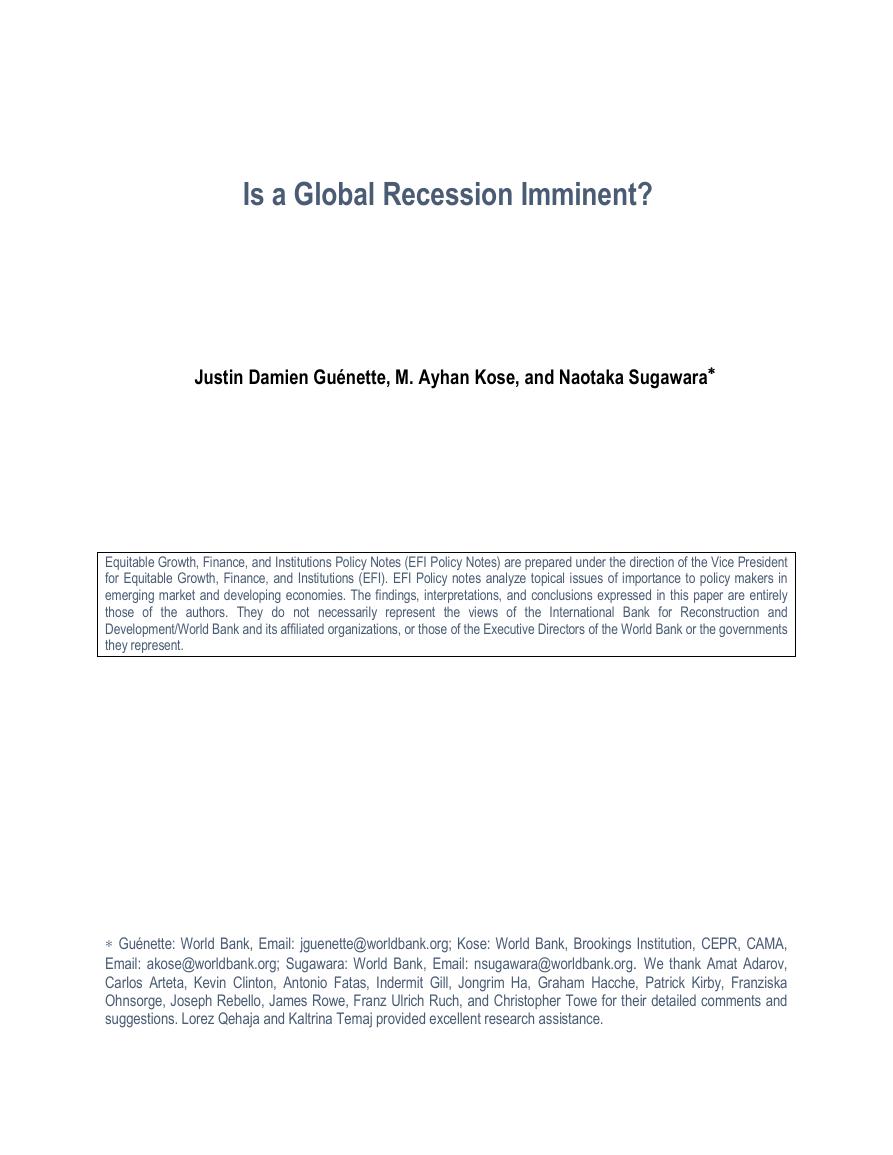
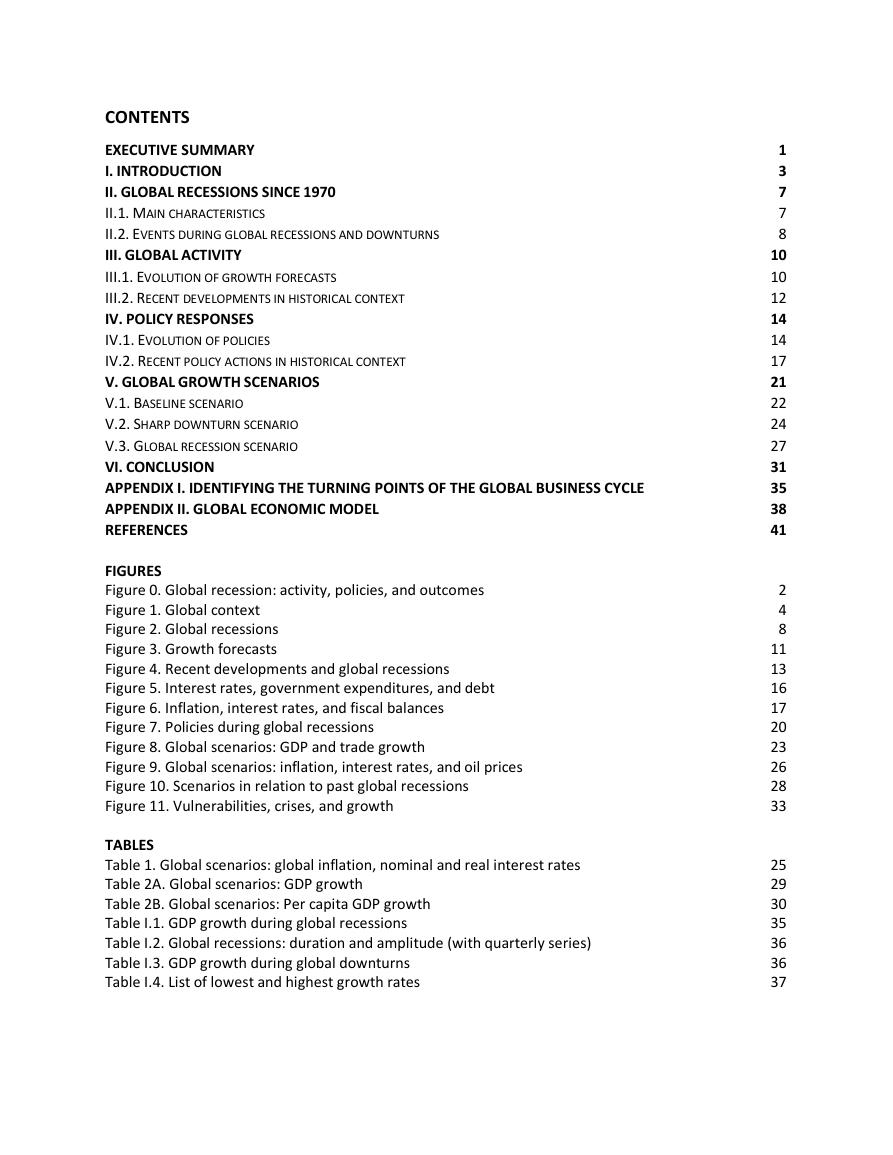


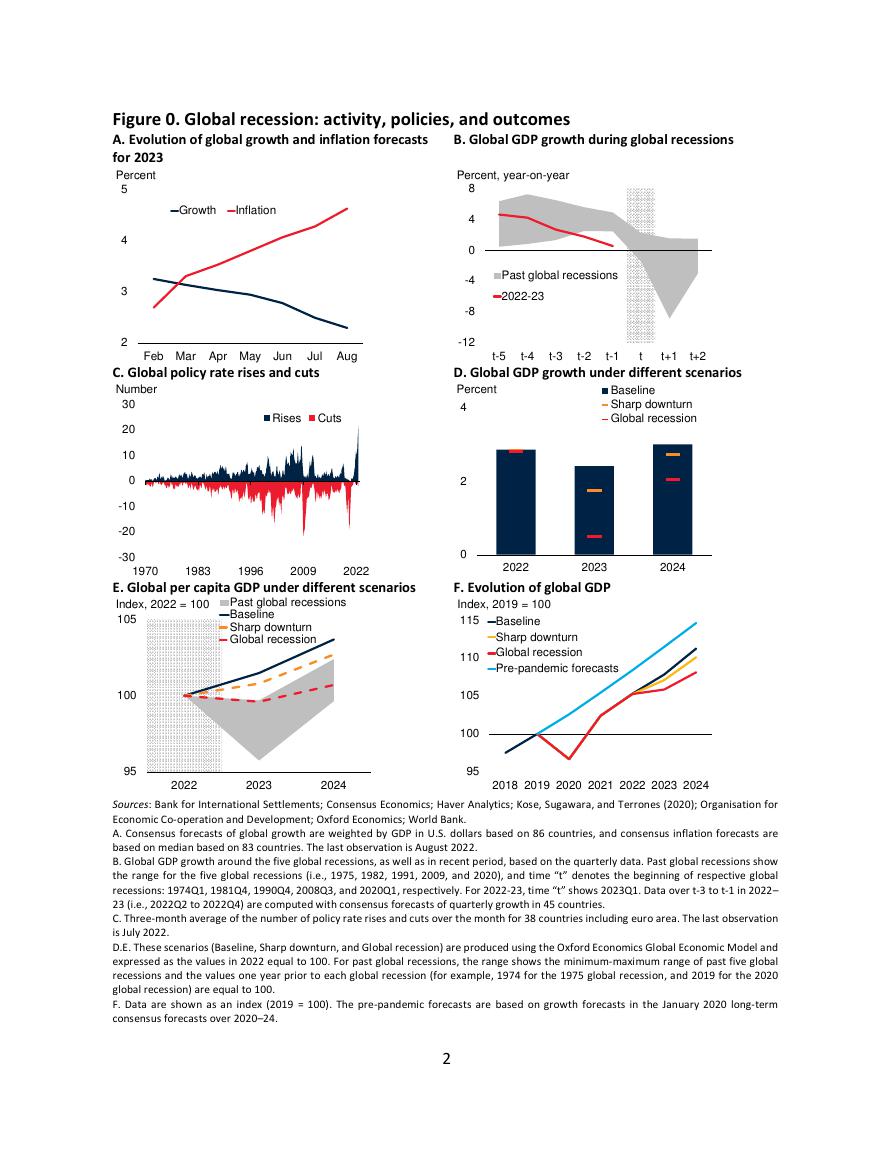
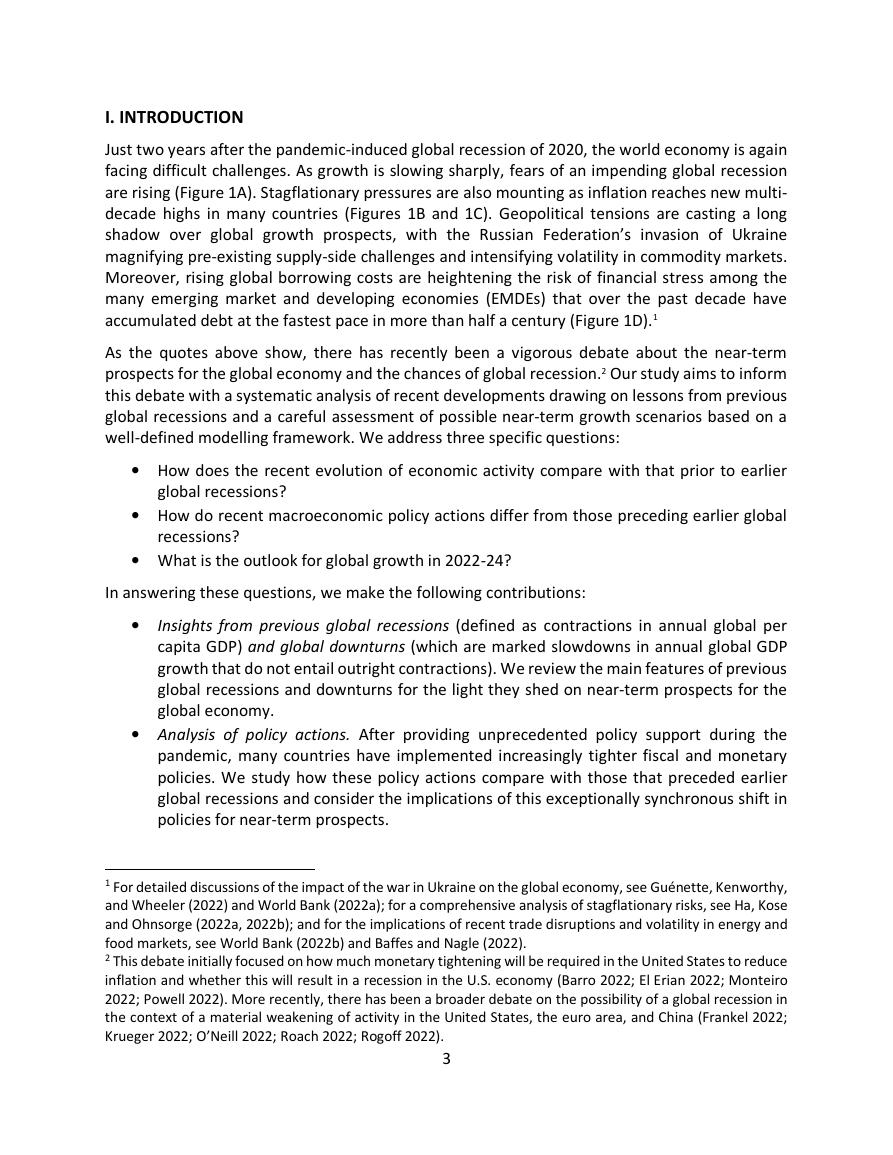
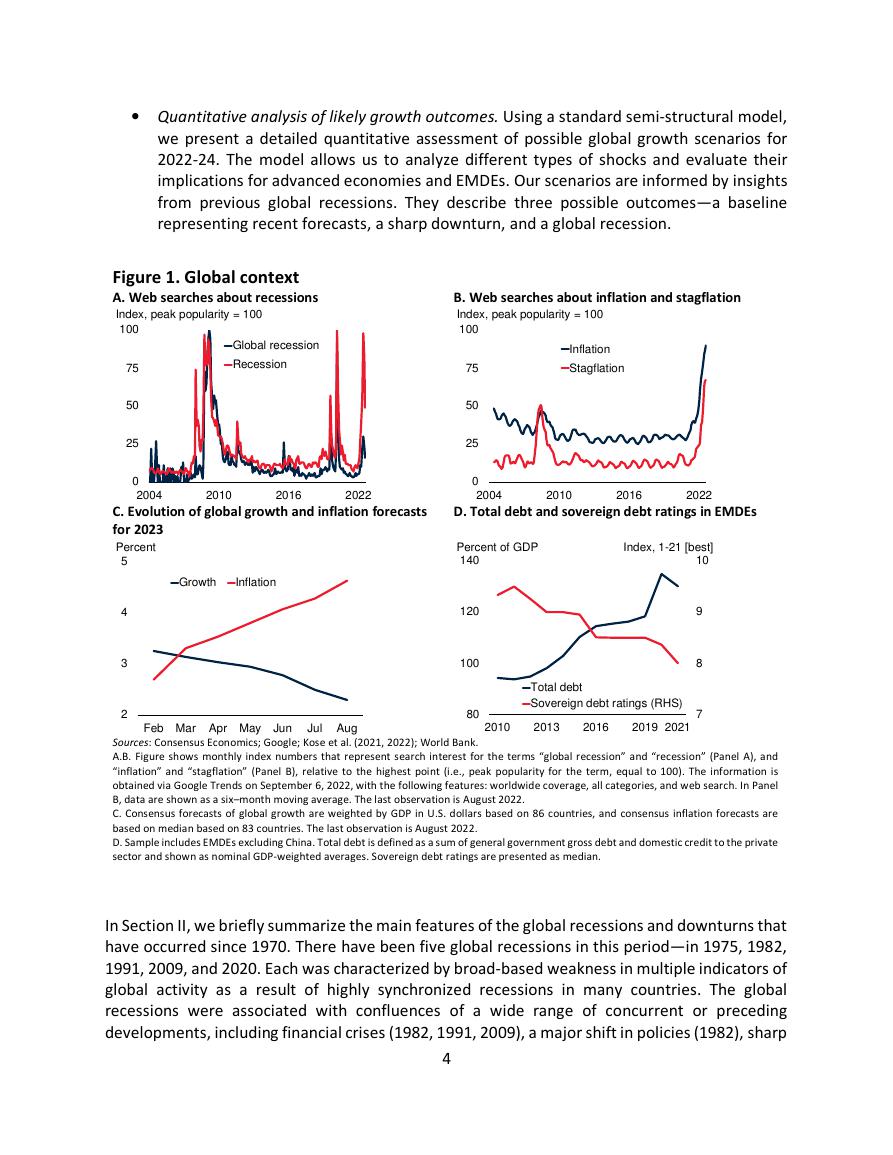








 uCOS-III的任务调度算法研究.pdf
uCOS-III的任务调度算法研究.pdf STM32F103x8B_DS_CH_V10(7STM32中文数据手册).pdf
STM32F103x8B_DS_CH_V10(7STM32中文数据手册).pdf FX2N系列PLC培训教程.pdf
FX2N系列PLC培训教程.pdf Modbus协议资料.pdf
Modbus协议资料.pdf WM8978中文资料(芯片资料).doc
WM8978中文资料(芯片资料).doc 5-1.【Codelab】HarmonyOS基于图像模块实现图库图片的四种常见操作.pdf
5-1.【Codelab】HarmonyOS基于图像模块实现图库图片的四种常见操作.pdf GX Developer 编程软件使用说明.pdf
GX Developer 编程软件使用说明.pdf MR-E伺服与FX3G接线图.pdf
MR-E伺服与FX3G接线图.pdf ATK-NEO-6M GPS模块常见问题汇总_201400721.pdf
ATK-NEO-6M GPS模块常见问题汇总_201400721.pdf STM32F407ZGT6(芯片资料).pdf
STM32F407ZGT6(芯片资料).pdf FM1715编程指南.pdf
FM1715编程指南.pdf Profibus教程-7.PROFIBUS-FMS.pdf
Profibus教程-7.PROFIBUS-FMS.pdf